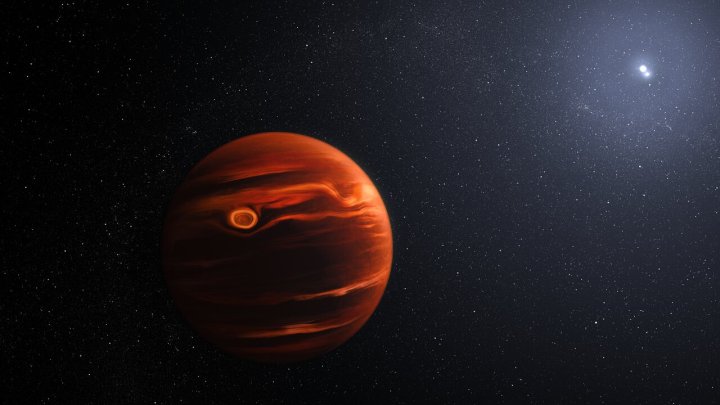One of the most exciting things about the James Webb Space Telescope is that not only can it detect exoplanets, but it can even peer into their atmospheres to see what they are composed of. Understanding exoplanet atmospheres will help us to find potentially habitable worlds, but it will also turn up some fascinating oddities — like a recent finding of an exoplanet with an atmosphere full of gritty, sand clouds.
Exoplanet VHS 1256 b, around 40 light-years away, has a complex and dynamic atmosphere that shows considerable changes over a 22-hour day. Not only does the atmosphere show evidence of commonly observed chemicals like water, methane, and carbon monoxide, but it also appears to be dotted with clouds made up of silicate grains.

Astronomers were able to get an excellent view of the planet because instead of orbiting one star like the planets in our solar system, this planet orbits a pair of stars and it takes 10,000 years to complete a full orbit. That means it is far away from the light of its stars, so it is easier for astronomers to see the planet’s relatively dim reflected light.
“VHS 1256 b is about four times farther from its stars than Pluto is from our Sun, which makes it a great target for Webb,” said science team lead Brittany Miles of the University of Arizona in a statement. “That means the planet’s light is not mixed with light from its stars.”
Sand clouds are unusual, but not unheard of when it comes to exoplanets. In this case, the gritty clouds are located up high in the planet’s atmosphere, where temperatures reach an incredible 1,500 degrees Fahrenheit. The planet has low gravity as well, allowing the clouds of both larger and smaller grains to float high in the atmosphere.
“The finer silicate grains in its atmosphere may be more like tiny particles in smoke,” said co-author Beth Biller of the University of Edinburgh. “The larger grains might be more like very hot, very small sand particles.”
The researchers say that although they are excited by their findings, they want to do more research to understand the planet’s atmosphere. “We’ve identified silicates, but a better understanding of which grain sizes and shapes match specific types of clouds is going to take a lot of additional work,” Miles said. “This is not the final word on this planet — it is the beginning of a large-scale modeling effort to fit Webb’s complex data.”
The research is published in The Astrophysical Journal Letters.
Editors' Recommendations
- James Webb images capture the galactic winds of newborn stars
- See what James Webb and Hubble are observing right now with this tool
- James Webb photographs two potential exoplanets orbiting white dwarfs
- James Webb snaps a stunning stellar nursery in a nearby satellite galaxy
- James Webb Space Telescope celebrated on new stamps




